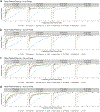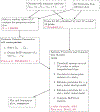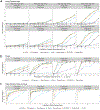Mendelian randomization accounting for correlated and uncorrelated pleiotropic effects using genome-wide summary statistics
- PMID: 32451458
- PMCID: PMC7343608
- DOI: 10.1038/s41588-020-0631-4
Mendelian randomization accounting for correlated and uncorrelated pleiotropic effects using genome-wide summary statistics
Erratum in
-
Publisher Correction: Mendelian randomization accounting for correlated and uncorrelated pleiotropic effects using genome-wide summary statistics.Nat Genet. 2020 Jul;52(7):750. doi: 10.1038/s41588-020-0655-9. Nat Genet. 2020. PMID: 32472065
Abstract
Mendelian randomization (MR) is a valuable tool for detecting causal effects by using genetic variant associations. Opportunities to apply MR are growing rapidly with the increasing number of genome-wide association studies (GWAS). However, existing MR methods rely on strong assumptions that are often violated, leading to false positives. Correlated horizontal pleiotropy, which arises when variants affect both traits through a heritable shared factor, remains a particularly challenging problem. We propose a new MR method, Causal Analysis Using Summary Effect estimates (CAUSE), that accounts for correlated and uncorrelated horizontal pleiotropic effects. We demonstrate, in simulations, that CAUSE avoids more false positives induced by correlated horizontal pleiotropy than other methods. Applied to traits studied in recent GWAS studies, we find that CAUSE detects causal relationships that have strong literature support and avoids identifying most unlikely relationships. Our results suggest that shared heritable factors are common and may lead to many false positives using alternative methods.
Conflict of interest statement
Competing Interests Statement
The authors declare no competing interests.
Figures









References
-
- Smith GD & Ebrahim S ‘Mendelian randomization’: can genetic epidemiology contribute to understanding environmental determinants of disease? Int. J. Epidemiol 32, 1–22 (2003). - PubMed
-
- Boef AGC, Dekkers OM & Le Cessie S Mendelian randomization studies: a review of the approaches used and the quality of reporting. Int. J. Epidemiol 44, 496–511 (2015). - PubMed
Publication types
MeSH terms
Grants and funding
LinkOut - more resources
Full Text Sources

